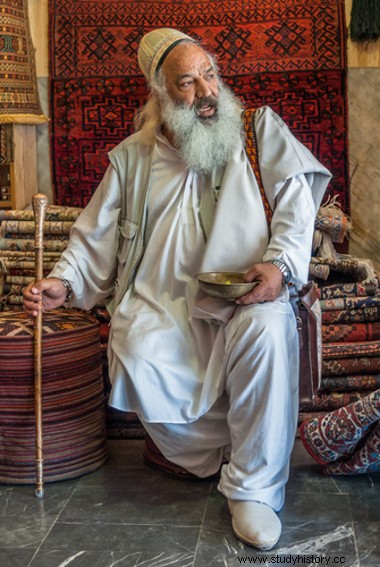
By Me. Cláudio Fernandes
In the western world, especially from the turn of the 20th century to the 21st century, a somewhat biased, not to say negative, view of the Islamic religion was built . This is due to several factors, but one of the main ones is the issue of terrorist practices perpetrated by radical Islamic groups, such as Al Qaeda and the Islamic State, usually inspired by Sayyid Qutb, one of the ideologues of the Muslim Brotherhood. The direct association between Islamic terrorism and the Islamic religion also stems from a profound lack of knowledge of the very structure of Islam. One of the lesser-known characteristics of the Islamic religion is its mystical, expressed in sufism , a name that refers to the woolen tunic worn by the first Sufi masters.
Every great religious system produced saints and mystics. That is, people who tried to elevate themselves spiritually through excellence in the exercise of virtues and through asceticism – the practice of abstaining from earthly pleasures. Christianity (both Catholic and Orthodox and Protestant) had its mystics, Hinduism and Buddhism as well. It is no different with Islam.
Actually, the term Islam it is only one of the parts of the religion that bears it as its name. As the scholar of comparative religions and perennial wisdom, William Stoddard, says in his work Sufism:Metaphysical Doctrine and the Spiritual Way in Islam , the practice of the Islamic religion “comprises, for the believer, three major categories:Islam (submission to revealed law), iman (faith in the shahada) and ihsan (virtue or sincerity).” The practice of Sufism is related to this last category, the ihsan , or practice of virtue.
Thus, Sufism is organized around a spiritual path (or path) of Islam, a path taken through the cultivation of virtues. The Sufis call this path dhirk, that is, the invocatory prayer that conveys the “remembrance of God”. One of the most practiced methods to achieve dhirk is the recitation of the Sufi rosary, called the wird . There are several recitation formulas, which can vary from tariqa for tariqa. The taricas are organizations that accommodate practitioners of Islamic mysticism – although there are examples of many ecumenical taricas. Every tarica is headed by a shaikh (or cheike) that guides initiates who want to deepen in the cultivation of virtues and in the study of religion. The shaikh , roughly speaking, is a Sufi master.

Above, the image of a Sufi master at the market in the city of Isfahan, Iran *
Because it is organized in this way, Sufism has an initiatic characteristic. That is, it maintains a closed circle of guidance between master and disciple. The latter therefore depends on the initiation of the first - needs to be initiated in Sufi practice. This characteristic radically differentiates Islamic mysticism from Christian, for example, which has nothing initiatory or esoteric.
The practice of Sufism led several Islamic mystics to the composition of magnificent works related to religious and interior knowledge, which are witnesses to the greatness of Islamic civilization. The vision we have of Islam, distorted by terrorism – which wants to claim for itself the monopoly of the virtues of Islam – hides this greatness.
* Image credits:
Shutterstock and javarman
